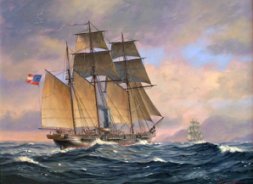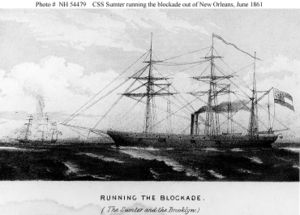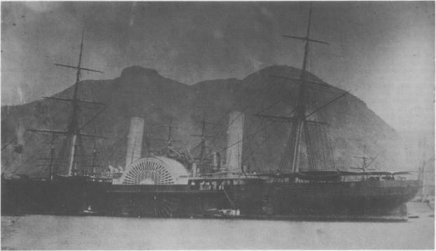Rebel Raider
Rebel Raider: Raphael Semmes’s Cruise in the CSS Sumter, Harpur All Gosnell, 2005
Patrick O’Brien Painting of CSS Sumter

This book recounts the exciting adventures of the first Confederate raider the CSS Sumter, a slow merchant steam-sail tub, converted to a cruiser by its commander, Raphael Semmes, and of its escape from the Union blockade in New Orleans, subsequent capture of 18 prizes, daring escapes from Union warships, and sailing, barely, across the Atlantic with final abandonment in Gibralter, all in about six months.

Wolf of the Deep, Raphael Semmes and the Notorious Confederate Raider CSS Alabama, Stephen Fox, 2007
CSS Alabama

Raphael Semmes’ next command was the newly constructed Liverpool Laird 290 one of a kind special purpose cruiser. At 13 knots and two swiveling guns, able to disguise itself as a China clipper, the Union had no warships to match its speed and abilities. At one time the Union had 18 warships looking for the Alabama. Only one, the converted yacht the sidewhelled Vandenburg, was a match for her speed but the Vanderbilt, at three times the size, used enormous quantities of coal and never encountered the Alabama.
USS Vanderbilt

The CSS Alabama was a copper clad wooden ship to reduce hull fouling and enable repairs in any port. Her steam engines had a condenser able to produce fresh water from sea water and her coal carrying capacity allowed her extended cruising without recoaling stops. Her funnel could be lowered to aid her clipper disquise and her screw was retractable to reduce drag. Over its two year career, the Alabama took 65 prizes and never entered a Confederate port. When she entered Galvaston, she encountered 50 Union gunboats and sank the USS Hatteras, the first of only two fights she was in. She sailed from the Grand Banks to the Yucatan and Brazil, then crossed the Atlantic to Cape Town and on East to Singapore then returned to Cherbourg France where she was sunk by the USS Kearsarge.
The book focuses on the larger impact of the Confederate raiders, of which the Alabama was the most successful and most notorious. Over 900 American owned ships were sold to foreigners to avoid capture and the impact on American commerce and shipping were long lasting. Some have wondered if more Confederate raiders could have changed the outcome of the war, but the Alabama, Florida, and Georgia were finding few prizes at the end. The British paid $15.5 million to the U.S. government after the war as reparations for its role in building ships and otherwise assisting the raiders.